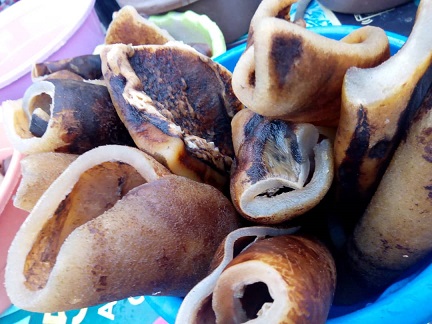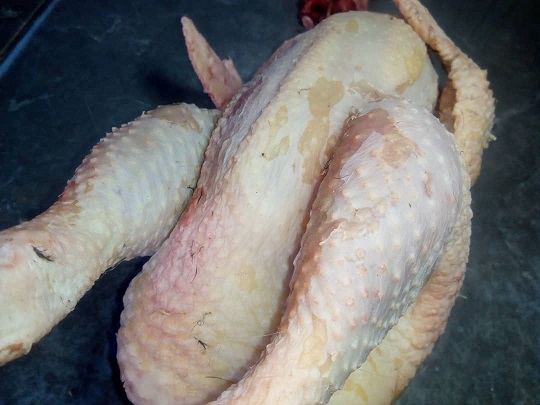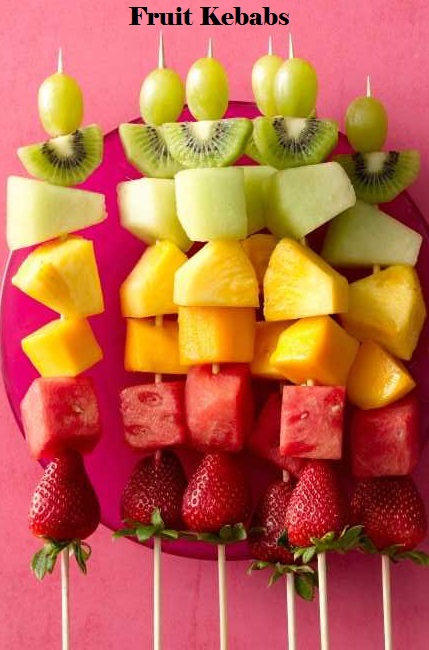
Is Eating Cow Skin Meat Good or Bad? – Kpomo Meat | Health Benefits of Ponmo | Is Eating Cow Skin Healthy?
Cow Skin meat, edible cowhide is popularly known as Kanda, Kpomo, or Pomo is the hairy covering of a cow. The skin is the largest organ serving as a protective covering of a cow.
Ponmo has become a popular local delicacy regardless of social class level. It’s a good weight loss meat that is unique with less calories and tastes nice when properly cooked in dishes.
There has always being a loggerhead as to whether it is Good or Bad to eat cow skin. While some group of Scholars are of the opinion that edible cow skin (kpomo) does not have any nutritional value!
However, this other Group of Scholars totally disagree with that statement but rather choose to qualify it this way; by saying cow skin has low nutritional value compared to other protein sources of meat.
Kpomo is cow skin meat that is processed for users to cook and eat just like beef; for example the usual peppered Pomo. Where to buy cow skin meat in Nigeria? In the market, slaughter house, or hawkers of Kanda meat.
Pomo is a delicacy that Nigerians enjoy especially when added to soups and stew. While others prefer spicy peppered kponmo meat to whine their mouth and keep the jaw busy.
Similarly, some other African countries like Ghana, Cameroon, Togo, and Benin Republic also prepare delicious delicacies with cowskin meat. Places like West Indians and Caribbean’s are not left out in eating ponmo.
Read Also >>>>>>> Peppered Kpomo – How to Make Spicy Pomo
Cow Skin Meat Nutrition Facts and Calories – Health Benefits of Cow Skin
Giving the nutritional value of kpomo will help you decide whether cow skin will only be used for your shoes or for better skin health?
A 100 grams of boiled, thick cow skin contains approximately 224.65 kcal energy, 46.9 g protein, 6.80 g carbohydrates, 1.09 g fat, approximately 43.9 g water, and 0.02 g fiber. For micronutrients, it contains iron (4.3 mg), calcium (61 mg), magnesium (12 mg), phosphorus (36 mg), and small amounts of zinc (6.79 mg).
Moreover, in Kpomo there is still something useful for the body since it contains skin-collagen and some amount of protein. So, Pomo actually has something and will contribute little to your diet.
Collagen is a protein that is abundant in our body. Because collagen is produced in our body, there is no need to take collagen for growth.
However, as we get much older, our ability to produce collagen decreases, which causes wrinkles. Eating more of refined carbohydrates or sugar (white rice, white flour), smoking, and ultraviolet rays from the sun can reduce our ability to produce more collagen effectively; so cow skin food will help in this case.
Collagen has been widely advertised to revitalize the skin, build muscle, improve skin elasticity, improve hair, and reduce the pain caused by arthritis.
Is eating cow skin healthy?
It is frequently asserted that cow skin is nutritionally worthless. In reality, this is untrue. Collagen, a protein type that is crucial for maintaining skin tissues and the structure of bones, is abundant in cow skin.
Is there any nutrients in cow skin?
A 100 grams of boiled, thick cow skin contains approximately 224.65 kcal energy, 46.9 g protein, 6.80 g carbohydrates, 1.09 g fat, approximately 43.9 g water, and 0.02 g fiber. For micronutrients, it contains iron (4.3 mg), calcium (61 mg), magnesium (12 mg), phosphorus (36 mg), and small amounts of zinc (6.79 mg).
Is cow leg healthy?
It contains enough calcium, potassium, magnesium, protein, phosphorus, zinc, manganese, copper, boron, iron, vitamin A, vitamin C, vitamin K, and the B vitamin. Cow Leg Beef stock Strengthens Bones And Teeth.
Is cow skin high in cholesterol?
Collagen, a type of protein that is essential for stabilizing bones and skin tissues, is abundant in cow skin. There is the presence of unsaturated fat and cholesterol in it, so consume in moderation.
What is skin of cow used for?
The natural, hairy skin of a cow is called cowhide. it can also be treated to produce leather. The leather can be used to make, shoes, wallets, leather coats, belts, and furniture. Although most cow leather is hairless.
Similarly, in some African countries like Nigeria, Ghana, Togo, Benin Republic, and Cameroon process this cow skin into edible meat popularly called pomo, ponmo or kanda.
What is the benefit of Ponmo?
When cooked properly in meals, ponmo is a fantastic meat alternative that is distinct, has fewer calories, and tastes good. But it shouldn’t be used in place of excellent sources of complete protein like beef and salmon.
Is Ponmo meat red meat?
Ponmo is not completely categorize as red meat though it has low nutritional value and not as harmful as people believe, ensure you consume in moderate proportion.
What color is cow skin?
A tricolor cowhide will typically come in colours of white, brown, and black. Naturally, brinned cowhide skins fall within the category of natural cowhide skin color. Cowhide skins with brindles can range in color from brownish to light shades.
How to Process Cow Skin into Ponmo
Cow skin is very hard to eat if not properly cooked and takes time to cook before eating.
How to Perfectly Clean Cow Skin Meat
- First and foremost, boil a pot with water to cover the cow skin over high heat.
- Secondly, remove from heat and transfer into a bowl of cold water to cool off. Thereafter, use a sharp knife in scraping out what is inside the Pomo.
- Furthermore, you can use an iron sponge bought specially for washing cow skin to remove any dark particles from the skin as you wash to brighten.
- Finally, after much cleaning of the cow skin, discard and change the water. Add fresh water and allow to soak in clean water for as long as you wish.
Processing of cow skin
There are 3 methods for this. The first two methods are to remove and soften the hair from the skin, and the third method is tanning.
White Ponmo
The white Pomo is much healthy compared to the dark Ponmo based on the method of processing the cow skin into meat rather than burning that may hazardously affect human life.
First, the skin is removed from the flesh
Then deepens into boiling water or after slaughtering the cow they infuse air into it cow to rise and become puffy then hot water is poured over the skin to soften it and they gently shaved off the hair.
Thirdly, they are boiled till tender enough for human consumption.
However, the skins of the prepared cow are soaked in water for a few hours to achieve a mild fermentation process, which makes them more tender.
Dark Pomo
In this method, the skins are burned on an open fire wood (or maybe burning tires or petrochemicals) as you scrap to remove hair while burning.
Thereafter it’s being cut into smaller sizes and boiled.
How healthy a dark Pomo maybe all depends on the type of fire used in processing it; if its fire- wood is usually a minor problem, tires, and petrochemicals a major problem.
Based on the petrochemicals and tires used in processing these cow skin for commercial purposes Lagos residents are being warned against consumption of poisonous Pomo According to a new paper publication on thisdaylive.com
Tanning Cow Skin
Hides and skin is the process of treating animal skin to produce leather.
Tanning hide in the skin involves a process that permanently alters the protein in the skin, making it more durable and less prone to decay and giving it color.
Noteworthy, Ponmo emerges the best as meat alternative for outdoor /indoor delicious delicacies worldwide and It’s heart-friendly so consume moderately.


